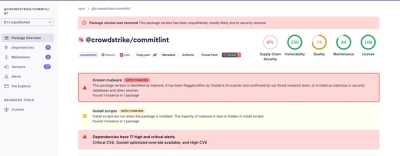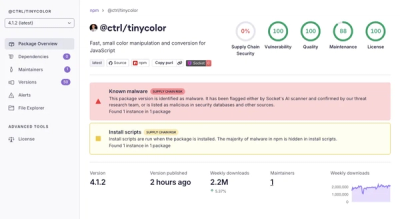Form validation for MobX
Taken strong inspiration from: react-bootstrap-validation, but mobx-input depends just on validator.js(18kb minified). React, MobX and mobx-react are peerDependencies, assuming you are already using those anyway.
Installation:
npm install mobx-input --save
Usage - Example Form:
import React from 'react'
import { ValidatedInput, submit } from 'mobx-input'
export class UserRegisterComponent extends React.Component {
onSubmit = () => {
const result = submit(this.props.controller.formData)
if (result.valid) {
this.props.controller.registerUser(result.values)
}
}
render() {
const {appState, controller} = this.props
const job = appState.currentJob
return (
<div className='container'>
<ValidatedInput
type='text'
label='First Name'
name='firstName'
validate='required'
model={controller.formData}
errorHelp={{
required: 'First Name is required'
}}
/>
<ValidatedInput
type='text'
label='Last Name'
name='lastName'
validate='required'
model={controller.formData}
errorHelp={{
required: 'Last Name is required'
}}
/>
<ValidatedInput
type='text'
label='Email'
name='emailAddress'
validate='required,isEmail'
model={controller.formData}
errorHelp={{
isEmail: 'Email is invalid',
required: 'Email is required'
}}
/>
<ValidatedInput
type='password'
label='Password'
name='password'
validate='required,isLength:4:60'
model={controller.formData}
errorHelp={{
isLength: 'Password must be at least 4 characters long',
required: 'Password is required'
}}
/>
<button
type='submit'
onClick={this.onSubmit}>
Register
</button>
</div>
)
}
}
Just provide any MobX observable object as model to all form fields. All values and validation data will be stored there. Pass this object to submit function to trigger validations for untouched components. Validation rules are specified in validate attribute, and error messages in errorHelp
ValidatedInput
Should be used instead of the original one for all the fields that need to be validated. All ValidatedInputs should have name property defined.
Properties
name: String required
This property is inherited from Input with only difference that it is required for ValidatedInput.
<ValidatedInput
name='email'
validate='required,isEmail'
/>
validate: String
Validation rule is a combination of validator.js method names separated with comma.
<ValidatedInput
name='email'
validate='required,isEmail,isLength:5:60'
/>
In the example above, input's value will be validated with three methods. isLength method also receives additional params. Inverse rules (like !isNull) are supported, although in errorHelp object they're looked up without the exclamation mark.
errorHelp: Object|String
Can be either a string with error text or an object with map ruleName => errorText.
<ValidatedInput
name="email"
validate='required,isEmail',
errorHelp={{
required: 'Please enter your email',
isEmail: 'Invalid email'
}}
/>
model: Object
Any MobX observable object to store all form data
Custom render function and validation function
It's also possible to provide custom render and validation functions to allow for different design or specialized validated components
const telephoneInputRenderer =
<ValidatedInput
label='Phone number'
name='callNumber'
validate={(x) => PhoneNumber.parse(x)}
errorHelp='Phone number is not valid'
model={appState.currentForm}
renderFunction={(props) =>
<FormGroup controlId={props.id} validationState={props.validationState} >
<ControlLabel>{props.label} </ControlLabel>
<ReactTelephoneInput
id={props.id}
defaultCountry='nl'
flagsImagePath='/images/flags.png'
value={props.value}
onChange={this.handlePhoneChange.bind(this, props.changeHandler)}
/>
{props.help && <HelpBlock>{props.help} </HelpBlock>}
</FormGroup>
}
/>
Default render function
You can also specify defaultRenderFunction in case you don't want to repeat yourself in every ValidatedInput. Just import { config } from mobx-input, and override it.
import { config, ValidatedInput, submit } from 'mobx-input'
const myDefaultRenderFunction = (props) =>
<div className={`form-group ${props.validationState ? 'has-error' : ''}`}>
<h1>My Own Mega Label</h1>
<label for={props.id} className='control-label'>
{props.label}
</label>
{props.componentClass === 'textarea' ?
<textarea
id={props.id}
className='form-control'
placeholder={props.placeholder}
value={props.value}
onChange = {props.changeHandler}
/>
:
<input
id={props.id}
className='form-control'
type={props.type}
placeholder={props.placeholder}
value={props.value}
onChange = {props.changeHandler}
/>
}
{props.help && <span className='help-block'>
{props.help}
</span>}
</div>
config.defaultRenderFunction = myDefaultRenderFunction



